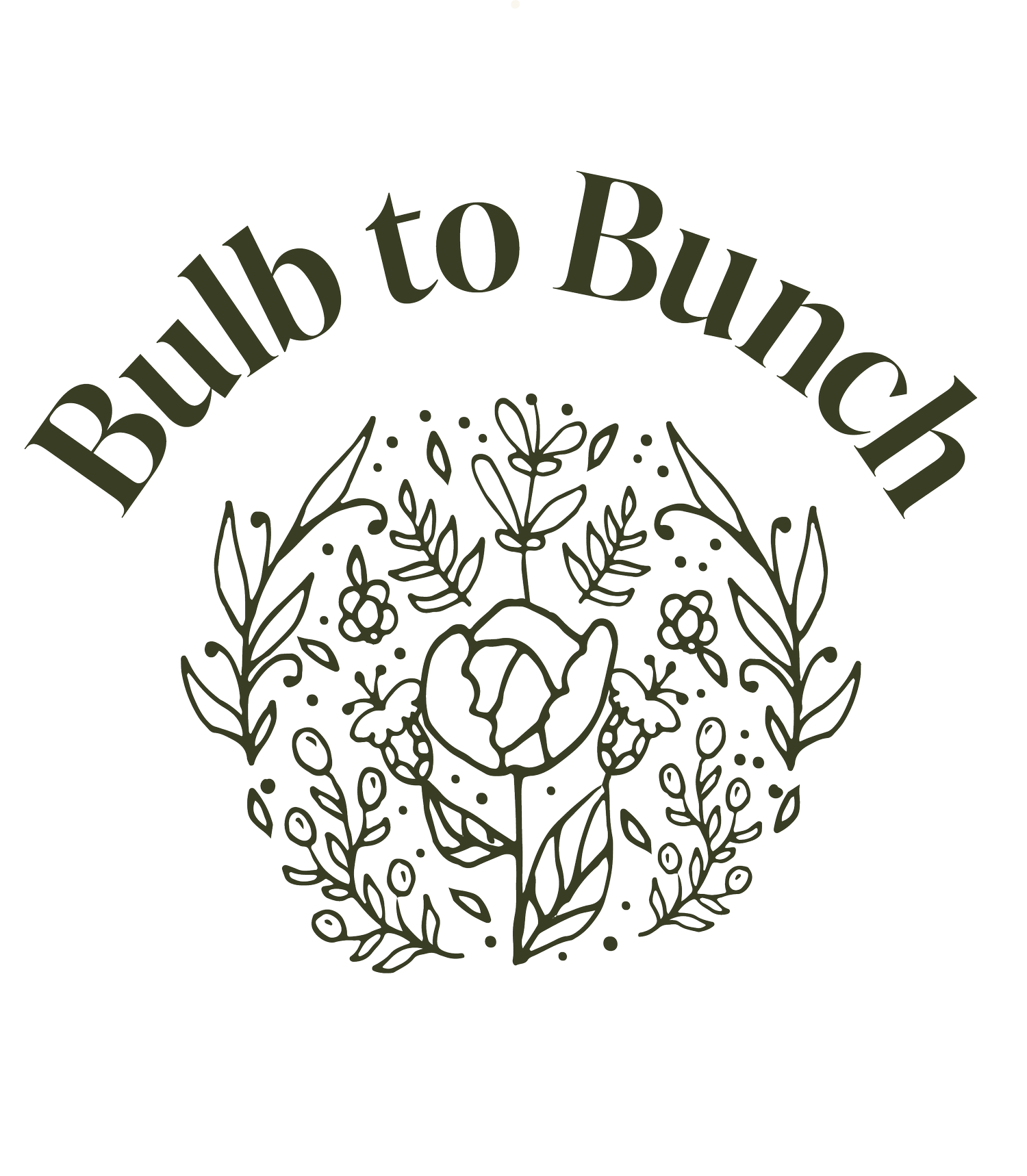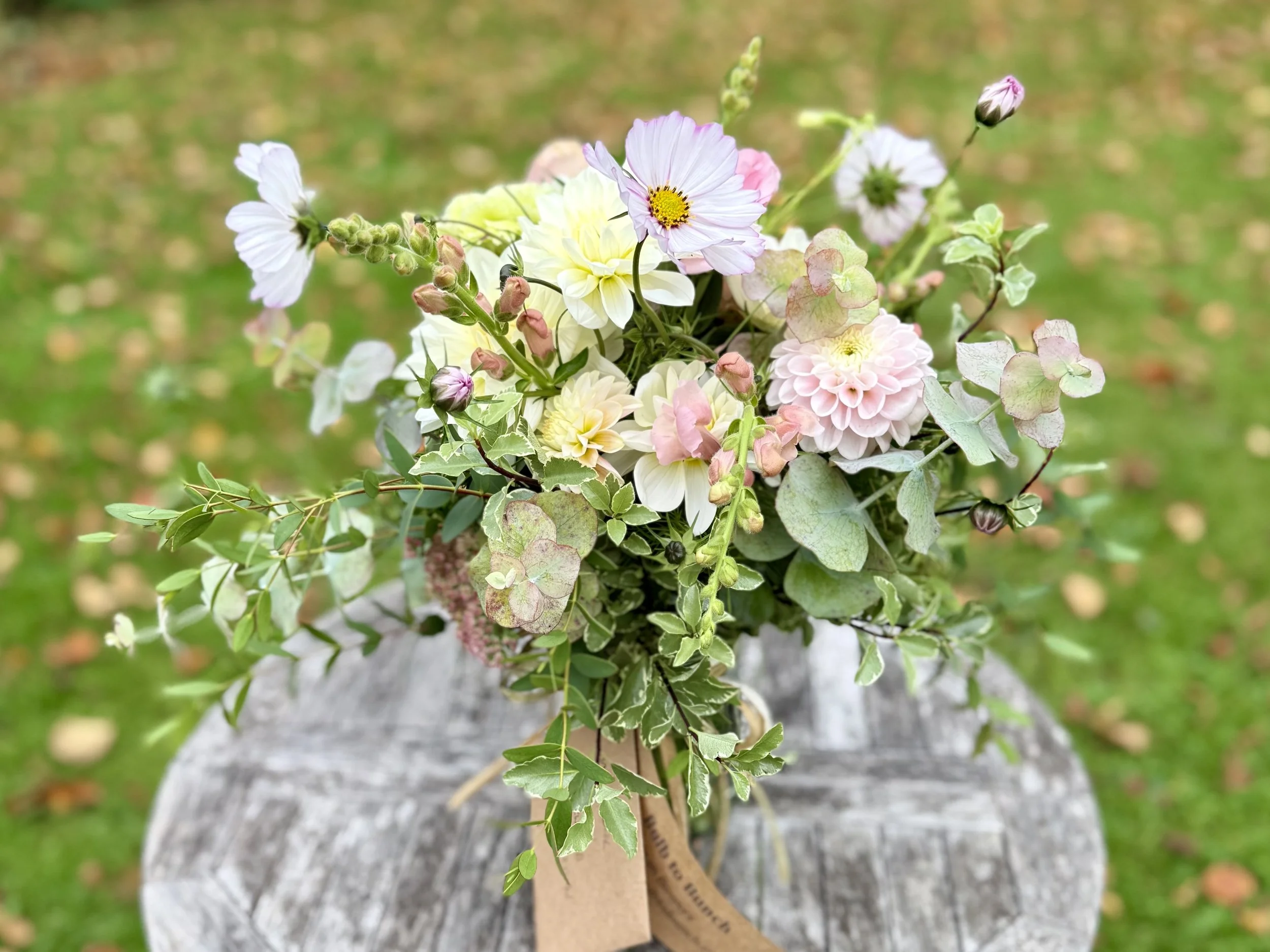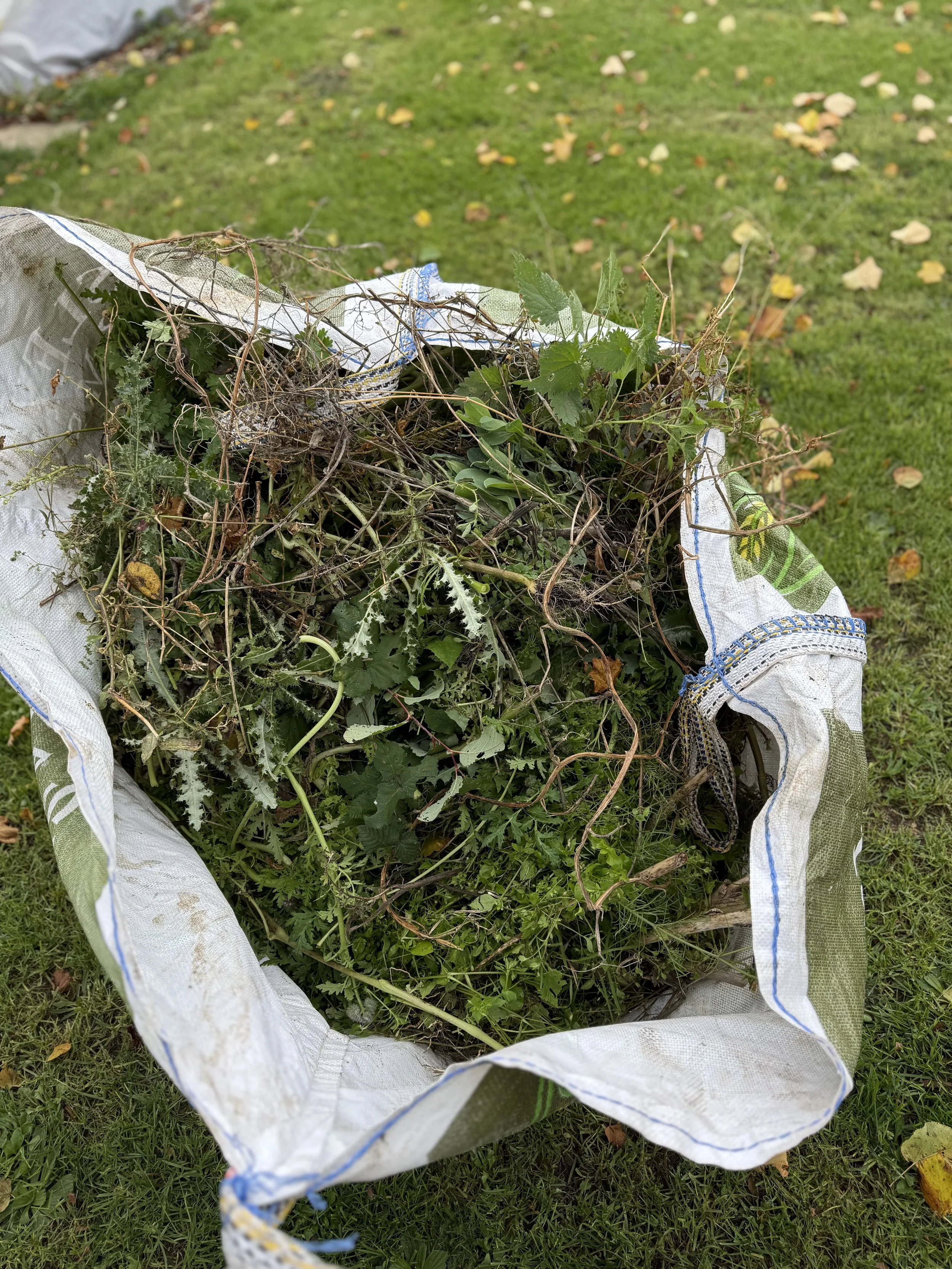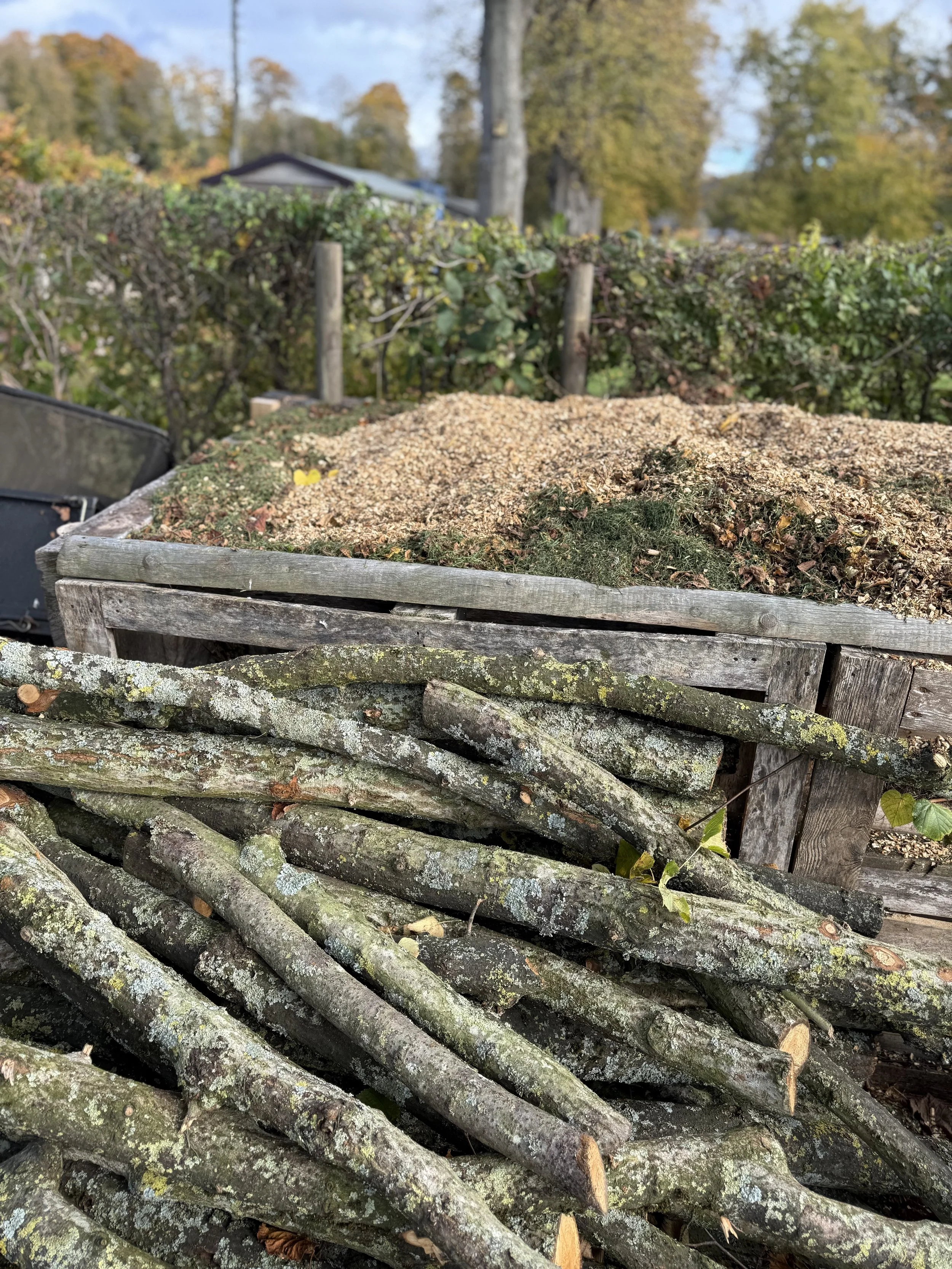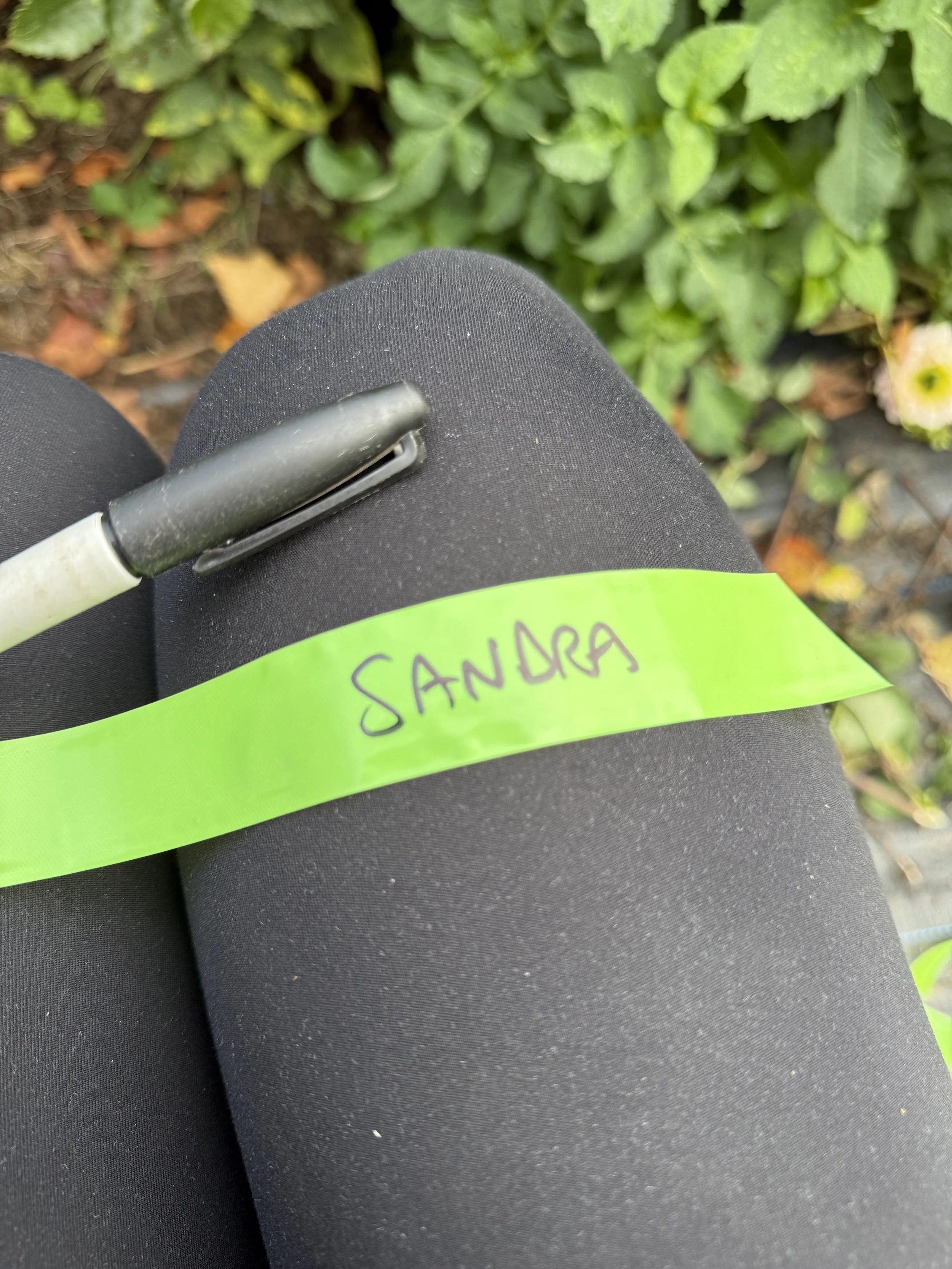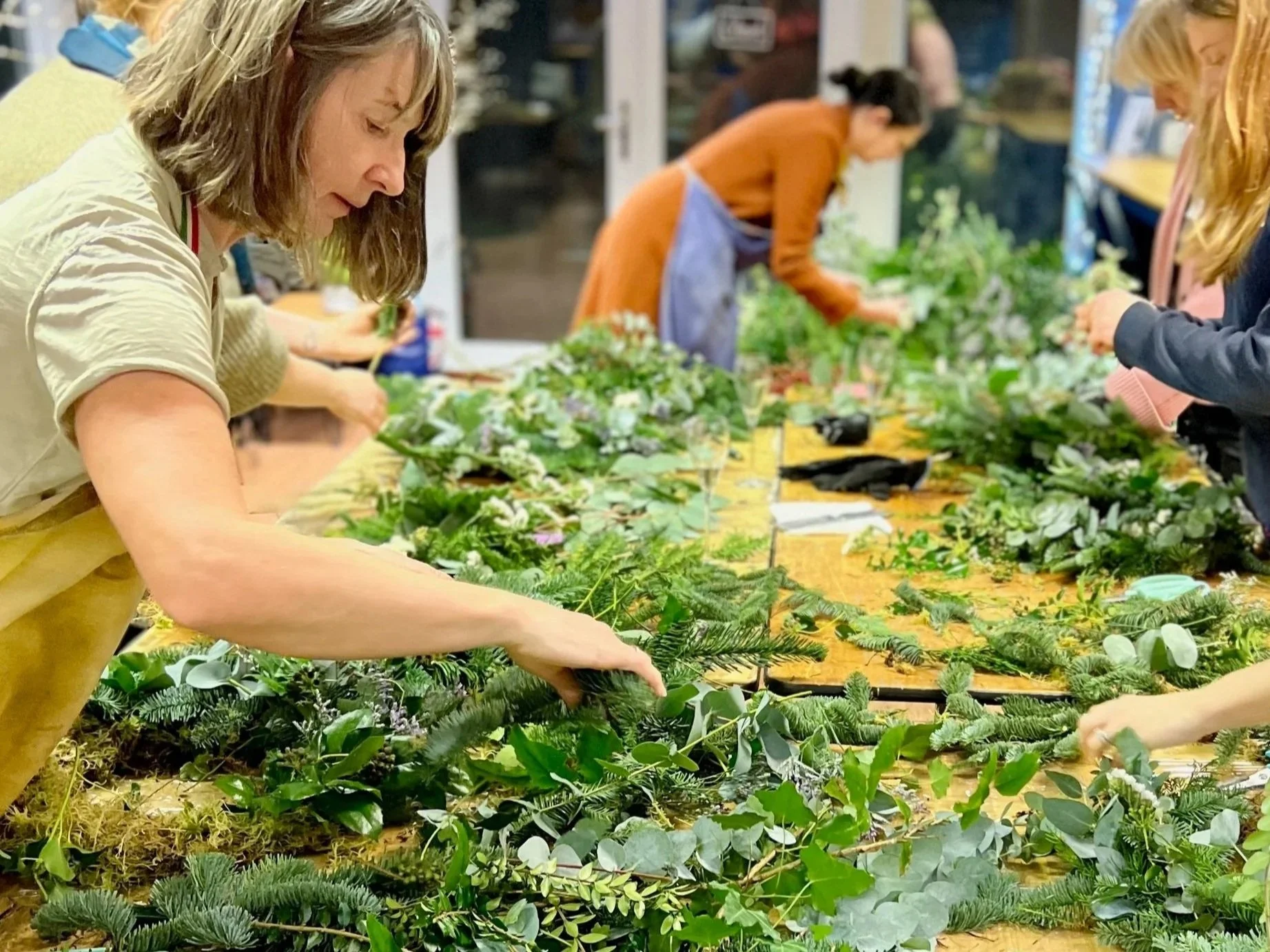What happens when the flowers stop blooming?
You’d think the winter months would mean a flower farmer could finally take things easy. I mean, nothing’s growing, right? Not quite. The off season might look quieter from the outside, but behind the scenes it’s almost as busy as summer – just in a different way. Here’s what I’ll be up to over the coming months.
Putting the beds to sleep
If I’m on top of things, I clear all the beds before Christmas and cover them in a layer of mulch. It’s not a quick process. By this stage, the weeds are rampant – it’s like clearing a jungle. And many of the plants that are dying back still have deep, stubborn roots. It takes serious effort to pull out a ten-foot sunflower.
If I’m running behind (which is more often the case), I don’t finish until spring. Then I tell myself the dieback is great for the soil and the fading foliage helps the wildlife – which, to be fair, it does.
Lifting and labelling the dahlias
Digging up dahlias is, without question, one of the worst jobs on the flower farm. I wait until after the first frost has blackened the foliage, so it’s always cold. Each tuber is dug up by hand, washed off with the hose (making it wet as well), then left to dry – usually in the dining room!
Once dry, they’re boxed, labelled, and stored away in the loft. Hundreds of them. It’s a huge job, and every year it gets worse as I add to my stocks.
Sowing seeds for next season
I sow my first hardy annuals in September and keep them in the polytunnel. By now, they’re ready for pricking out and potting on. Another succession starts in January, this time under grow lights indoors. It’s always exciting to see fresh green shoots in the depths of winter – a promise of what’s to come.
Tulips and daffodils
Daffodil bulbs go in around October, tulips in November. I used to plant them with precision, carefully spacing each bulb. Now I just tip them onto the bed, spread them into a single layer, and cover them with compost. The results are just as good – and a lot faster.
I’ve stopped buying daffodil bulbs altogether and say I’m going to stop buying tulips too, but I can never resist a few more. I only grow double varieties of both – they’re beautiful but hard to sell because you have to cut them before they open. People can’t see how special they are and don’t want to pay more than supermarket prices. Still, I love them too much to stop.
Christmas workshops
Time seems to go faster every year. I refuse to advertise Christmas workshops before Halloween – I can’t bring myself to wish the year away that quickly! Of course, that means some people have already booked elsewhere by the time I start, but so be it.
There are hundreds of wreath workshops around these days, so I also offer festive table arrangement sessions.
I do love teaching them. It’s always amazing to see what people create – often better than mine!
Festive wreaths and table arrangements
Once December arrives, it’s full-on production. I probably enjoy the first fifty wreaths, but by the time I’m spending long days in a cold shed with wet foliage, the sparkle wears off a bit. Still, when the table arrangement orders start coming in, I know Christmas is close and the festive feeling returns.
A season for rest – and renewal
Winter might not bring blooms, but it brings breathing space. Time to take stock, plan, and prepare for the year ahead. The activities of these months are what keeps everything going when spring comes round again. It’s slower, muddier, and much colder – but in its own way, it’s every bit as rewarding.
Grounded | A space for slowing down and embracing life’s simple pleasures | www.bulbtobunch.com/blog
